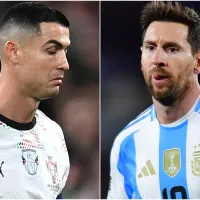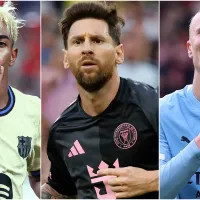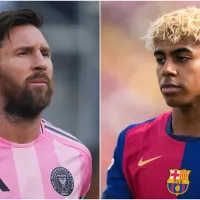The equation for the overall global soccer structure goes like something like this. FIFA is greater than Continental Confederations, which are greater than the National Federations, thus greater than Domestic Professional Leagues. That’s on paper, anyway. But in the United States of America, there’s a question of who’s really driving the sport. Does the USSF, our Federation, or MLS, our domestic first division league, hold the real power?
For most of the 20th century, the sport of soccer, and by extension the USSF, was largely an afterthought. Both domestically and on the international scene, American soccer was not terribly relevant at all. Aside from a few fleeting years of sizzle in the late 1970s with the NASL, soccer didn’t matter here.
But that all changed in 1988, when the United States was officially awarded the 1994 World Cup. Hosting the biggest sporting event in the world was a huge responsibility. And it came with some caveats. One of them was that the USA had to establish a men’s professional first division league. In 1988, only the American Soccer League, officially a 2nd tier league, existed – and it was in just its first season.
In the wake of that decision, the US officially become a player on the world stage. The US men have qualified for all but one World Cup since 1990. USA ’94 turned out to be the most successful World Cup from a financial standpoint, and still holds the overall attendance record. The legacy that World Cup left behind became Major League Soccer.
And since kicking off in 1996, MLS has been at the forefront of pretty much every facet of the game in this country. Nurturing and promoting our first division league has been a top priority to the Federation. That makes sense, but this has not come without issues over the years.
Conflicts arise
In 2002, MLS was not in the best of positions. They had just disbanded the league’s two Florida franchises, the Miami Fusion and Tampa Bay Mutiny. There were just three ownership groups between all ten remaining teams. New expansion teams (Chivas USA and Real Salt Lake) would not arrive until 2005.
So in 2002, MLS created Soccer United Marketing (SUM). This entity buys and manages commercial rights for various soccer competitions and events in the United States. This included the 2006 and 2010 World Cups, which at the time had no bidders for English language rights in the US. From 2004-2022, they also managed the commercial rights of US Soccer, including the national teams. Capitalizing on more directly-profitable soccer properties has helped the owners maintain and grow MLS. At the same time, SUM also markets the Mexican national team in the United States — hence the reason why Mexico always plays its “home” games on US soil, where SUM (ie Major League Soccer) and the Mexican federation can make more money selling expensive tickets.
But this close relationship between MLS and the USSF came with conflicts of interest. For many years, the commercial rights to Major League Soccer and the US national teams were bundled as one package. If you wanted to broadcast the US national teams, you had to buy rights to MLS as well. In addition, there was no competitive bidding for commercial rights that included the MLS+USSF package. SUM, and therefore MLS owners, cashed in on the commercial value of the US National Teams with no competition. Effectively, the USSF was helping to finance Major League Soccer. Of course, other professional leagues such as USL, NASL, and NISA – all under the oversight of the USSF – did not benefit from such an arrangement. The NASL would eventually take these issues to court (that lawsuit is still pending an outcome).
USSF vs MLS? Or USSF is MLS?
Meanwhile, certain officials would hold multiple roles with MLS, SUM, and/or USSF. Don Garber has been MLS Commissioner since 1999, is CEO of SUM, and sits on the pro council of the USSF. Sunil Gulati was USSF President from 2006-2018, was the original deputy commissioner of MLS, and has sat on the board of SUM.
It was quite the cozy relationship between the two entities. And even with the recent separation when it comes to commercial rights, you have to wonder who’s really driving the direction of the sport in the US.
In October 2014, USMNT Manager Jurgen Klinsmann ruffled feathers when he criticized the moves of Clint Dempsey and Michael Bradley from Europe to MLS. Klinsmann argued, rightly in hindsight, that it’d be better for Americans to play in Europe where they’d face tougher competition that would help them improve as players.
Garber hit back, claiming “Jurgen’s comments are very, very detrimental to the league. They are detrimental to the sport of soccer in America and everything that we are trying to do north of the border. And not only do I think they are detrimental, they are wrong.”
He went as far as to say “I am just demanding that he refrain from making comments that are critical of our players and damaging to our league.”
Two years later, in November 2016, Klinsmann was fired by the USSF after the USMNT failed to win their first two World Cup qualifiers. MLS mainstay and 1998-2006 national team manager Bruce Arena was brought in, but infamously the US still failed to qualify for Russia 2018.
Preferential treatment
These days, there are more conflicts between US Soccer and MLS than cozyness.
National Team home games, whether friendlies or in official CONCACAF competitions, are for the most part awarded to MLS venues and/or markets. As of 2023, this only covers 25 cities thus preventing a large number of cities throughout the country from ever seeing our national team.
MLS also are monopolizing the scheduling of games in the US. The gap between the quarterfinals (June 7th) and semifinals (August 23rd) of the US Open Cup conveniently makes room for the Leagues Cup (July 21-August 19). As a result, America’s oldest soccer competition, the US Open Cup (run by US Soccer), is taking a backseat to the superfluous MLS-Liga MX collaboration. Leagues Cup is being contested entirely in the USA and Canada, all at MLS venues. It can be argued that it adds nothing truly new to the competitive landscape, but it will drive ticket sales as MLS teams host Liga MX competition. And it secured a Spanish-language TV deal for MLS with Univision.
This all comes as Don Garber recently criticized the broadcasting and stadium quality of the Open Cup. However, many MLS teams themselves don’t take the USOC competition seriously until the later rounds, often fielding B-teams and hosting games at alternate venues.
Major League Soccer’s large seat at the table is also a major roadblock to any significant structural changes. Things like a calendar change, or promotion and relegation, would almost certainly be met with heavy resistance from MLS owners wishing to protect the financial value of their franchises.
The Federation theoretically has the authority to stipulate whichever regulations it wishes. In 2015, there was an attempt to alter the USSF Professional League Standards (PLS) to require a D1 league to have 16 teams at its outset. This would have made it harder for a league to apply and meet that standard. Coincidentally this was when the NASL was attempting to apply for D1 sanctioning. Whether the now-dormant NASL’s pursuit of this was foolish or not, the timing was conspicuous.
Who will forge the future of the game
Another mile marker in the story of the sport in America is fast approaching on the horizon. As we hurtle towards World Cup 2026, which entity will sit in the driver’s seat? USSF is now more independent, yes. But it very often seems that MLS feels entitled to any and all goodwill, interest, and revenue generated by the sport in this country. And they’re also compelled to grab those spoils at any chance they get.
And so the MLS/USSF power dynamic will likely continue to shift and evolve as we move into the next era of soccer in the US.
Perhaps an indication of who has the power within US soccer can be shown in a glimpse of a recent conversation between US Soccer executives and MLS. When it comes to soccer in this country, examples of the US Soccer Federation criticizing MLS are almost non-existent. But MLS Commissioner Don Garber takes jabs at US Soccer, as he tries to put them in their place, and at the same time reinforcing the point that MLS needs to be involved in the process.














